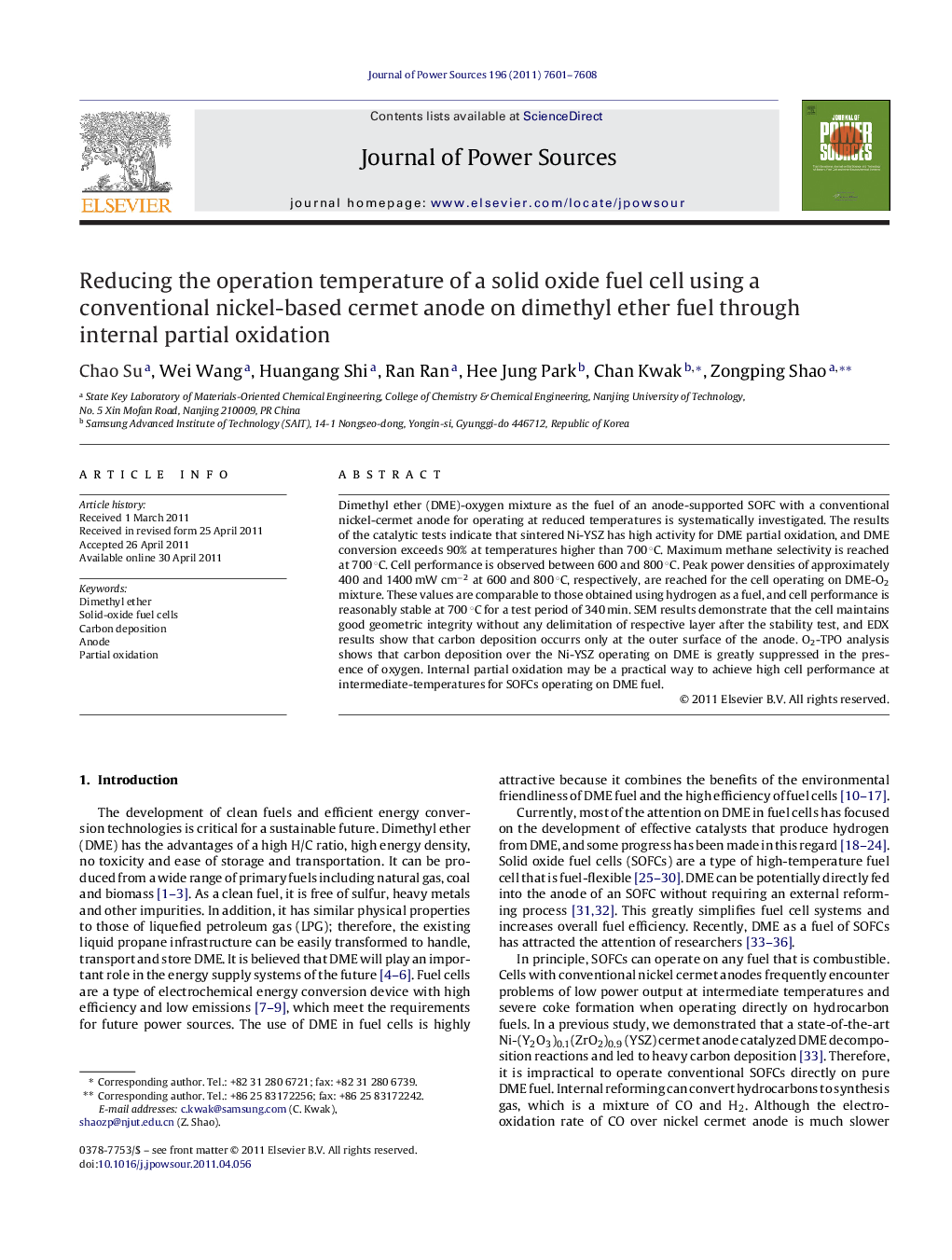| Article ID | Journal | Published Year | Pages | File Type |
|---|---|---|---|---|
| 1293379 | Journal of Power Sources | 2011 | 8 Pages |
Dimethyl ether (DME)-oxygen mixture as the fuel of an anode-supported SOFC with a conventional nickel-cermet anode for operating at reduced temperatures is systematically investigated. The results of the catalytic tests indicate that sintered Ni-YSZ has high activity for DME partial oxidation, and DME conversion exceeds 90% at temperatures higher than 700 °C. Maximum methane selectivity is reached at 700 °C. Cell performance is observed between 600 and 800 °C. Peak power densities of approximately 400 and 1400 mW cm−2 at 600 and 800 °C, respectively, are reached for the cell operating on DME-O2 mixture. These values are comparable to those obtained using hydrogen as a fuel, and cell performance is reasonably stable at 700 °C for a test period of 340 min. SEM results demonstrate that the cell maintains good geometric integrity without any delimitation of respective layer after the stability test, and EDX results show that carbon deposition occurrs only at the outer surface of the anode. O2-TPO analysis shows that carbon deposition over the Ni-YSZ operating on DME is greatly suppressed in the presence of oxygen. Internal partial oxidation may be a practical way to achieve high cell performance at intermediate-temperatures for SOFCs operating on DME fuel.
► The sintered Ni-YSZ anode has high activity for DME partial oxidation. ► The fuel cell operating on DME-O2 delivers high power output. ► Cell performance is reasonably stable at 700 °C for a test period of 340 min. ► Carbon deposition over Ni-YSZ is greatly suppressed by introducing O2 to DME.
